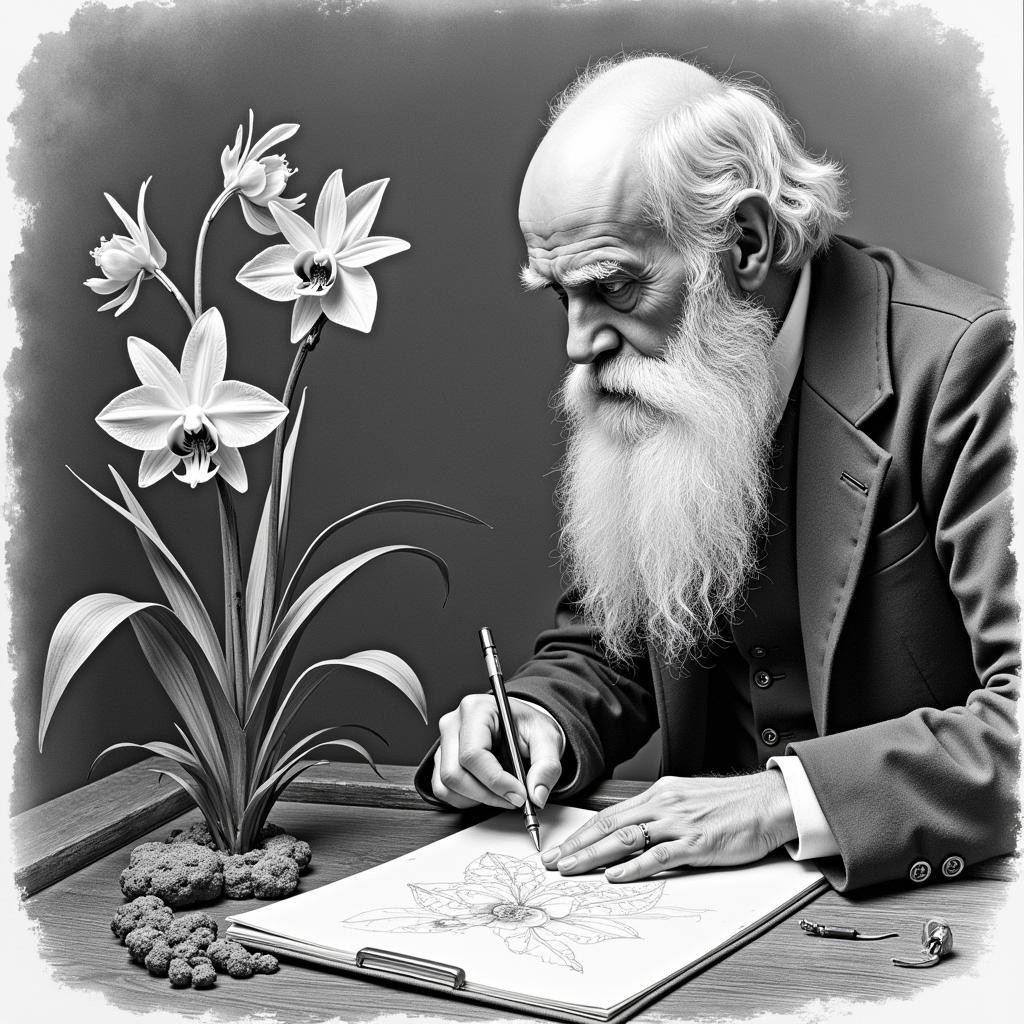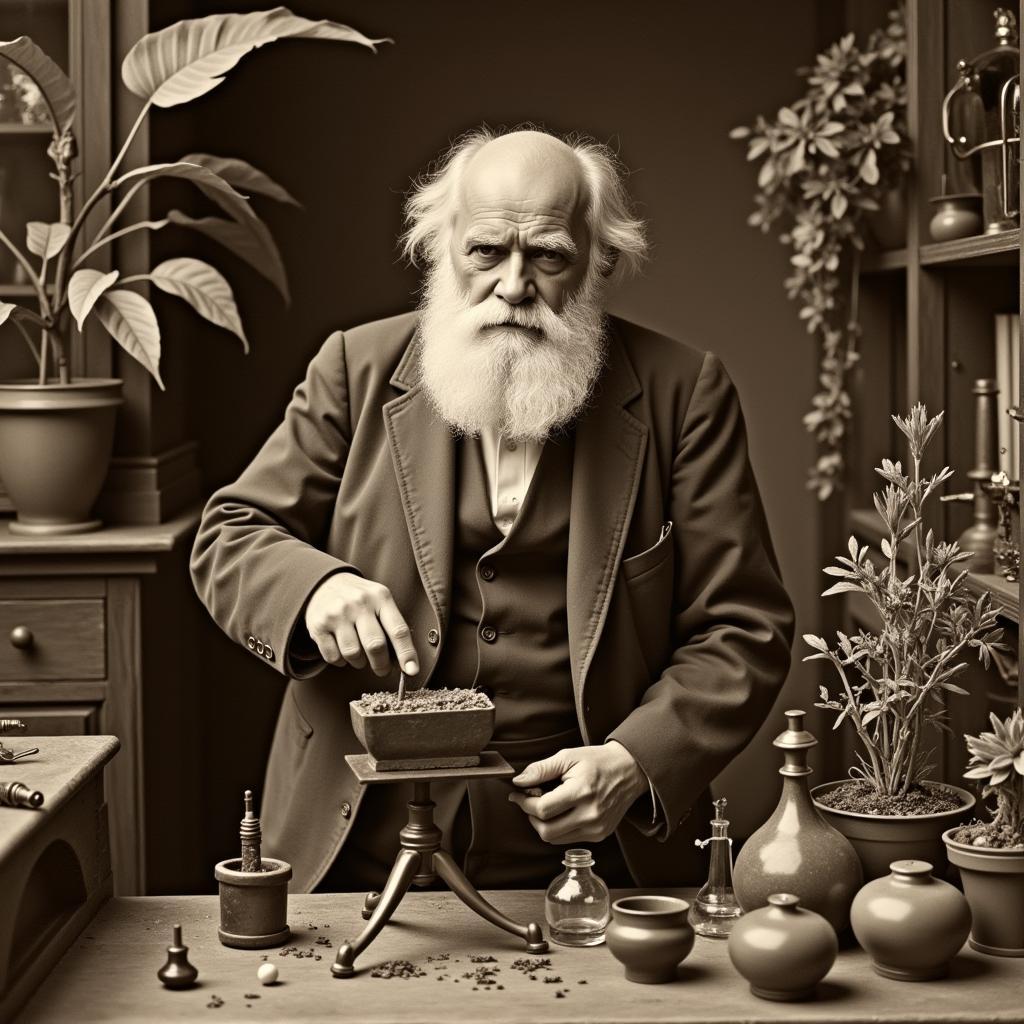Darwin and the Art of Botany: Unveiling Nature’s Secrets
Darwin’s legacy extends far beyond the realm of evolutionary theory. His keen eye for observation and meticulous documentation in the field of botany not only illuminated the intricate workings of plants but also revolutionized our understanding of the natural world. This article delves into the fascinating intersection of Darwin And The Art Of Botany, exploring his groundbreaking contributions and the profound impact they continue to have today.
 Darwin sketching orchids
Darwin sketching orchids
Darwin’s Botanical Breakthroughs: A Legacy of Observation
Darwin’s passion for botany blossomed early in his life. His travels aboard the HMS Beagle provided him with an unprecedented opportunity to study a diverse range of plant life across the globe. Meticulously collecting and cataloging specimens, he developed a profound appreciation for the adaptability and intricate mechanisms of plants.
One of Darwin’s most significant contributions to botany was his groundbreaking work on orchids. In his book, “The Various Contrivances by Which Orchids Are Fertilized by Insects,” he meticulously detailed the ingenious ways orchids have evolved to attract pollinators. Through careful observation and experimentation, he revealed the intricate relationship between these plants and their insect counterparts, demonstrating the power of natural selection in shaping even the most delicate floral structures.
Beyond orchids, Darwin’s botanical interests extended to a wide array of plant life. He conducted groundbreaking research on climbing plants, insectivorous plants, and the role of earthworms in soil fertility. His meticulous observations and experiments laid the foundation for our understanding of plant adaptations, plant-animal interactions, and the ecological processes that shape our planet.
Unveiling the Mysteries of Plant Movement
Darwin’s fascination with the natural world extended beyond the static forms of plants. He was deeply intrigued by their movements, which he believed held clues to their evolutionary history. In his later years, he devoted considerable time to studying plant movement, conducting experiments and publishing his findings in the book “The Power of Movement in Plants.”
Through his research, Darwin identified various types of plant movements, including phototropism (growth towards light) and geotropism (growth in response to gravity). He proposed that these movements were not merely passive responses to external stimuli but rather active processes driven by internal mechanisms. His work paved the way for future discoveries in plant physiology, revealing the dynamic nature of plant life.
 Darwin conducting plant experiments
Darwin conducting plant experiments
The Enduring Influence of Darwin’s Botanical Legacy
Darwin’s contributions to botany continue to resonate within the scientific community and beyond. His emphasis on observation, experimentation, and the interconnectedness of life has shaped the way we study and appreciate the plant kingdom. His work has inspired generations of botanists, ecologists, and evolutionary biologists, leading to countless discoveries and a deeper understanding of the natural world.
Moreover, Darwin’s botanical insights have practical applications in fields such as agriculture and conservation. His work on plant adaptations has informed the development of new crop varieties, while his understanding of plant-animal interactions is crucial for developing sustainable agricultural practices.
In conclusion, Darwin’s legacy as a naturalist extends far beyond his groundbreaking work on evolution. His contributions to the art of botany, driven by his insatiable curiosity and meticulous observations, have illuminated the hidden wonders of the plant kingdom and continue to inspire scientific inquiry today.



